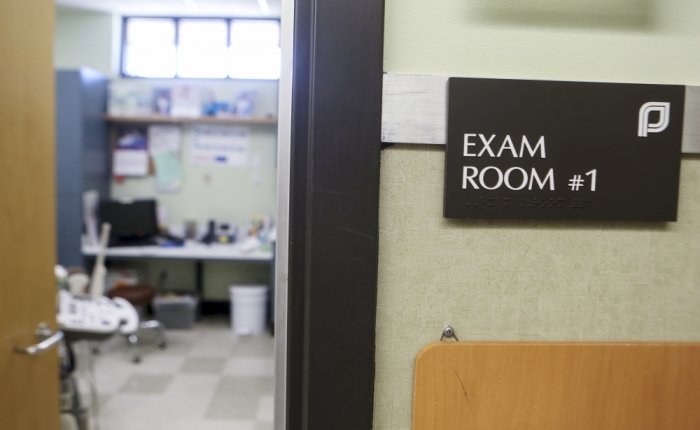Disparities in abortion data expose need for federal reporting requirements, researcher says

Disparities between two reporting institutions' data on abortion highlight the need for federally-mandated reporting requirements, a scholar and researcher contends.
In a Monday email to The Christian Post, Michael New, an associate scholar at the pro-life research group Charlotte Lozier Institute and assistant professor of social research at The Catholic University of America, summarized his analysis of the Guttmacher Institute's abortion data from 2020.
The Guttmacher Institute released its 2020 Abortion Provider Census Thursday, finding that the abortion rate increased by 1% in 2020. The number of abortions increased in 32 of 50 states, including all four geographic regions, according to Planned Parenthood's former research arm.
"Indeed, a comparison between the [U.S. Centers for Disease Control and Prevention] data and the Guttmacher data demonstrates the weakness of federal abortion-reporting requirements," New wrote in his analysis published by National Review. "Forty-seven states reported data to both the CDC and Guttmacher in 2020. In these 47 states, the CDC counted approximately 114,000 fewer abortions than Guttmacher did — an undercount of more than 16 percent."
New asserted that the "comparison between the CDC data and the Guttmacher data demonstrates the weakness of federal abortion-reporting requirements."
According to New, the disparities between the CDC and the Guttmacher Institute's abortion data were significant in certain regions.
In New York, for example, the CDC reported approximately 47,000 fewer abortions than Guttmacher, an undercount of about 42%. In New Jersey, the CDC reported approximately 25,000 fewer abortions.
The CDC and the Guttmacher Institute noted an increase in chemical abortion rates. Between 2017 and 2020, Guttmacher reported chemical abortions increased 44%. The share of abortions that are chemical abortions increased from 39% to 53%.
New believes the COVID-19 pandemic was partly responsible for this increase. However, he also noted that the chemical abortion rate has been increasing for quite some time.
Kristi Hamrick, chief media and policy strategist at Students for Life of America, stated that most abortion data in the U.S. comes from abortionists and that the country does not have a national reporting law.
"Name another 'industry' allowed to push deadly drugs and sell death without oversight that is reputable and trustworthy because any person with common sense can see that it's clearly a formula for lies and abuse," Hamrick wrote in a statement to CP.
"With a bad data pool coming from bad actors, it's no surprise that they can't get their stories straight."
Hamrick directed CP to an op-ed Students for Life of America and Students for Life Action President Kristan Hawkins published in The Washington Times last month. In the op-ed. Hawkins emphasized how the lack of a national abortion reporting law raises doubts about the safety of the practice.
Hawkins asserted that the Guttmacher Institute's ties to Planned Parenthood make for unreliable reporting. She also noted that by the CDC's admission, the organization only collects abortion data voluntarily.
"Our failure to track abortion results, complications, and long-term impacts create a lie in both surgical abortion and chemical abortion pills marketing," Hawkins wrote, claiming that a lack of proper reporting led to the loosening of restrictions on chemical abortion pills last year.
Amid the COVID-19 pandemic, the U.S. Food and Drug Administration temporarily suspended the in-person requirement for obtaining chemical abortion pills, making the decision permanent last December.
"The safety of women should concern everyone, both pro-choice and pro-life. It's a frequent plea lately from our fellow citizens that our leaders should seek common ground when possible," Hawkins argues.
"On an issue as contentious as abortion, everyone should be able to support a National Abortion Reporting Law after this election."
Hawkins noted that compared to reporting in the U.S., studies from countries with more reliable data on abortion often provide better insight into complications.
A 2004 study published in the Obstetrics and Gynecology journal compared mortality rates for women ages 15 to 49 in Finland who were pregnant or within one year of pregnancy termination from 1987 to 2000. The study found that the mortality rate after birth (28.2/100,000) was significantly lower than the mortality rate after an induced abortion (83.1/100,000).
Joy Stockbauer, a policy analyst for the Christian conservative advocacy group Family Research Council, seconded these concerns abort reporting data in a Monday statement to CP.
She noted that the disparity between the Guttmacher Institute and the CDC's annual counts is because the former gathers data directly from abortion providers. The CDC, on the other hand, collects data from individual health departments.
"A similar disparity occurred in 2019, when the CDC reported 98,434 fewer abortions than the Guttmacher Institute did for the 47 states that voluntarily reported," Stockbauer wrote.
"Overall, the lack of comprehensive reporting of abortion data prevents the CDC from accurately assessing the complications caused by abortion and the dangers abortion poses to women," she continued. "Furthermore, the clear inaccuracies in abortion reporting make it impossible to truly know how many unborn Americans' lives this horrific practice has taken."
As The Christian Post reported last month, the new data released by the CDC reported that surgical abortions decreased slightly in 2020 while chemical abortions increased. The study recorded 620,327 legally induced abortions reported to the organization from 49 reporting areas. The CDC found that the number of abortions and the abortion rate fell by 2% from 2019 to 2020.
In a statement to CP at the time, New likened the decrease in surgical abortion numbers to state policy decisions during COVID. Missouri, along with Texas and Alabama, quit doing abortions during the pandemic, and surgical abortion numbers notably declined in these states.
"This increase in chemical abortion numbers should concern pro-lifers for several reasons," New told CP. "Even though CDC data indicated that [surgical] abortions fell in 2020, CDC data found that abortions increased in both 2018 and 2019."
"An important reason for this increase was the rise in the number of chemical abortions," he continued.
"Additionally, for part of the COVID-19 pandemic, the FDA allowed women to obtain chemical abortion pills without an in-person medical exam. Tragically, the Biden administration FDA has continued that policy."
Samantha Kamman is a reporter for The Christian Post. She can be reached at: samantha.kamman@christianpost.com.




























